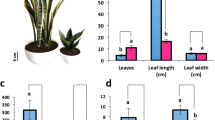Abstract
Callus cultures of Taxus cuspidata and Taxus canadensis were induced using different tissue explants including green and red arils, seed contents, young stems and needles. Callus derived from stem segments displayed the best growth in defined media. The culture medium was supplemented with reducing agents and phenolic-binding compounds to inhibit callus darkening and subsequent growth reduction. T. cuspidata explant growth was affected by different concentrations and ratios of 2,4-D and kinetin. Callus tissues of T. cuspidata were extracted for taxol after 2 months in culture and analysed by HPLC. The presence of taxol (0.020 ± 0.005% of the extracted dry weight) as indicated based on retention time, U.V. spectra, peak purity as assessed by photo-diode array spectroscopy and compared with an authentic taxol standard, as well as by 1H-NMR analysis. Suspension cultures of T. cuspidata were established from the callus cultures, subsequently immobilized onto glass fiber mats, and maintained as immobilized cultures for 6 months. The immobilized cell cultures also produced taxol at levels up to 0.012 ± 0.007% of the extracted dry weight.
This is a preview of subscription content, access via your institution
Access options
Subscribe to this journal
Receive 12 print issues and online access
$209.00 per year
only $17.42 per issue
Buy this article
- Purchase on Springer Link
- Instant access to full article PDF
Prices may be subject to local taxes which are calculated during checkout
Similar content being viewed by others
References
Wani, M.C., Taylor, H.L., Wall, M.E., Coggon, P. and McPhail, A.T. 1971. Plant antitumor agents VI. The isolation and structure of taxol, a novel antileukemic and antitumor agent from Taxus brevifolia . J. Am. Chem. Soc. 93: 2325–2327.
McGuire, W.P., Rowinsky, E.K., Rosenshein, N.B., Grumbine, F.C., Ettinger, D.S., Armstrong, D.K. and Donehower, R.C. 1989. Taxol: a unique antineoplastic agent with significant activity in advanced ovarian epithelial neoplasms. Ann. Intern. Med. 111: 273–279.
Whiterup, K.M., Look, S.A., Stasko, M.W., Ghiorzi, T.J., Muschik, G.M. and Cragg, G.M. 1990. Taxus spp. needles contain amounts of taxol comparable to the bark of Taxus brevifolia: analysis and isolation. J. Nat. Prod. 53: 1249–1255.
Fett-Neto, A.G. and DiCosmo, F. Distribution and amounts of taxol in different shoot parts of Taxus cuspidata . 1992. Planta Medica, In press.
Blechert, S. and Guenard, D. 1990. Taxus alkaloids, p. 195–238. In: The Alkaloids (Chemistry and Pharmacology), Vol. 39. Brossi, A. (Ed.). Academic Press, San Diego, CA.
Misawa, M., Hayashi, M. and Takayama, S. 1985. Accumulation of antineoplastic agents by plant tissue, p. 235–246. In: Primary and Secondary Metabolism of Plant Cell Cultures. Neumann, K.H.,Barz, W., Reinhard E. (Eds). Springer, Berlin, Heidelberg, NY.
Le Page-Degivry, M.T. 1973. Etude en culture in vitro de la dormance embryonnaire chez Taxus baccata L. Biologia Plantarum. 15: 264–269.
Rohr, R. 1982. Activation et prolifération des cellules du mégagamétophyte de Taxus cultivé in vitro . Can. J. Bot. 60: 1583–1589.
Rohr, R. 1973. Ultrastructure des spermatozoïdes de Taxus baccata L. obtehus à partir de cultures aseptiques de microspores sur un millieau artificiel. C. R. Acad. Sc. Paris 277D: 1869–187l.
Chmurny, G.N., Hilton, B.D., Brobst, S., Look, S.A., Whiterup, K.M. and Beutler, J.A. 1992. 1H and 13C-NMR assignments for taxol, 7-epi-taxol and cephalomannine. J. Nat. Prod. 55: 414–423.
Falzone, C.J., Benesi, A.J. and Lecomte, J.T.J. 1992. Characterization of taxol in methylene chloride by NMR spectroscopy. Tetrahedron Lett. 33: 1169–1172.
Snedecor, G.W. and Cochran, W.G., 1982. Statistical Methods, The Iowa State University Press, Ames, IA.
DiCosmo, F. 1990. Strategies to improve yields of secondary metabolites to industrially interesting levels, p. 717–725. In: Progress in Plant Cellular and Molecular Biology. Nijcamp, H.J.J., Van der Plas, L.H.W. and Van Aartrijk, J. (Eds). Kluwer Academic Publishers, Dordrecht, Belgium.
Facchini, P.J. and DiCosmo, F. 1990. Immobilization of cultures of Catharanthus roseus cells using a fibre glass substratum. Appl, Microbiol. Biotechnol. 33: 36–42.
Gamborg, O.L., Miller, R.A. and Ojima, K. 1968. Nutrient requirements of suspension cultures of soybean root cells. Exp. Cell Res. 50: 151–158.
Author information
Authors and Affiliations
Rights and permissions
About this article
Cite this article
Fett-Neto, A., DiCosmo, F., Reynolds, W. et al. Cell Culture of Taxus as a Source of the Antineoplastic Drug Taxol and Related Taxanes. Nat Biotechnol 10, 1572–1575 (1992). https://doi.org/10.1038/nbt1292-1572
Received:
Accepted:
Issue Date:
DOI: https://doi.org/10.1038/nbt1292-1572
This article is cited by
-
Endophytic fungus Pseudodidymocyrtis lobariellae KL27 promotes taxol biosynthesis and accumulation in Taxus chinensis
BMC Plant Biology (2022)
-
Specialized Plant Metabolism Characteristics and Impact on Target Molecule Biotechnological Production
Molecular Biotechnology (2018)
-
Accumulation and tolerance of Cr and Pb using a cell suspension culture system of Jatropha curcas
Plant Cell, Tissue and Organ Culture (PCTOC) (2015)
-
Endophytic fungi: novel sources of anticancer lead molecules
Applied Microbiology and Biotechnology (2012)
-
In vitro cell cultures obtained from different explants of Corylus avellanaproduce Taxol and taxanes
BMC Biotechnology (2006)



